- Share this article
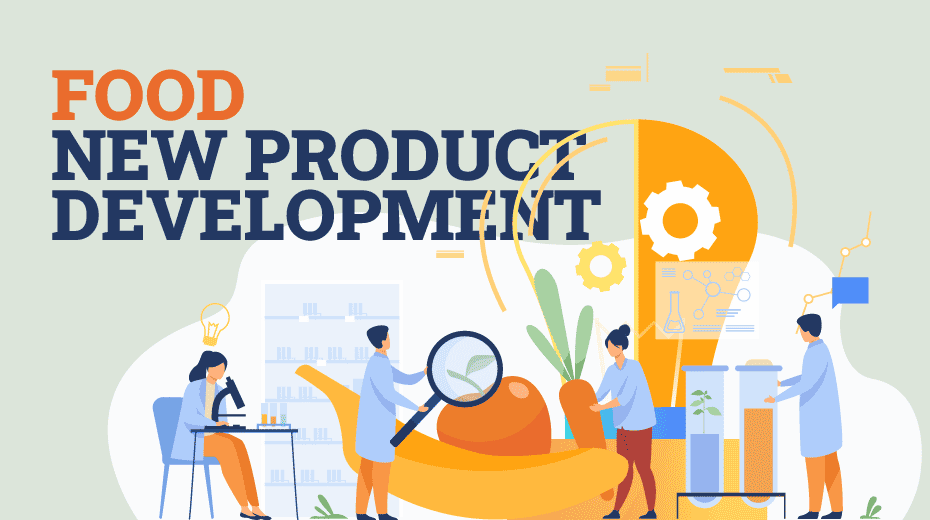
- Posted in in Technology

Food Product Development Process: Steps & Flowchart
- Posted by by Pranav Ghule
- March 14, 2021
Table of Contents
Food product development in food technology (processing) industries is a continuous and never stopping process. Have you observed different Flavours in the chips? Like Tomato, Cheese n Cream, Magic masala, Sour cream & Onion etc. Or take an example of Vegan Milk ( Plant-based milk ) made from entirely plant-based ingredients.
All this we can say is a result of the food product development process. Like developing different flavours in an already present product. Then, entirely developing a new product which is not present in this world before.
Sounds interesting? So, we will look into the Food product development process, including New product development.
What is New food product development (NPD)?
New product development is the process of developing new products by any food company, to begin to need to create a new product because of changing in new food technologies or the introduction of the competitive product in the market.
A food company can process a new product development, whether that food company is a part of changing the market or not — the new product based on the already existing one and act as a complement or improvement in existing products. Or may new products based on the latest technologies without a need of suffered from others.
There are several types of classification for the new product.
Classification of new food product development
New product development is classified in four categories :
1. Major innovation
Significant innovations are new in the market—the Food products created with the latest technologies, ingredients and provide a unique experience to the customers.
For example- Beyond meat developed, completely plant based-meat products which are free from any animal best ingredients.
Read More about Beyond meat: The Beyond Meat story – Vegan Alternative to meat
2. Product improvements
In this classification, the food products developed without considering creating a new market. But, Instead targets customers from competitors.
For example- In food products such as fat-free allergen-free products, which are already in the market and compete with competitors.
3. Product additions
In this classification, the food products developed by food companies known as imitation products. In fact, The food producers create products from available resources to develop the original product. which already produced by the original producer of that food product.
For example- the local snacks processing industry produces snacks products (chips, namkeen), imitating large companies in the snacks market.
4. Repositioned products
Repositioned products are promoted in a new way, such as attracting different kinds of customers. These are not new products, formulations nor having any new features, but they positioned in the other way to attract different groups of customers.
For example, – The Lucozade energy drink business changed the product’s image from a drink to recover people from an illness to a drink for people interested in sports. [Source: Superbrands case studies: Lucozade ]
After understanding the new food product development classifications, let’s look at the food product development process.
Food product development process : 8 steps
The food product development process consists of following 8 steps:
- Idea generation
- Evaluation & Screening
- Market research
- Product specification
- Feasibility study
- Production process development
- Prototype development & testing
- Launch & Commercialization
However, We will look into this food product development process, from starting to finalising and commercialisation one by one in detail.

1. Idea generation
Two product development process start with an idea. This idea can come from any place or any source. Typically a company generate hundreds of Idea by brainstorming. Still, a handful of good ideas come to an end, and there are two sources of Idea generation from where we get an idea.
- Internal source- the company finds new ideas interior utilising research and development and also, from the contribution from its employees.
- External source – new ideas from external sources such as distributors, suppliers and competitors. But the most important external sources are customers because the new development process should focus on creating customer value.
2. Evaluation and Idea screening
The next step in NPD is idea screening. However, Idea screening means filtering the ideas to pick a good one. In Idea generation, we find different ideas, and in this stage, we screen to choose a good one. The reason is that product development cost rice greatly in later stages; therefore, the company e would like to go ahead only with the ideas that will turn into profitable products dropping the flawed ideas.
3. Market research
In this research, the company will know about consumer preferences and also the acceptance of products. all the primary and secondary markets study used to collect data.
- Primary research – is a method of taking surveys and getting original data.
- Secondary research- analysing the data gathered in the primary survey investigating what found in the primary study.
Taking a survey to ask consumers what they want, what they need and whether they will accept the product. Also, The survey conducted to gather data & analyse, focusing on groups, gender, age, economic status, & geographical location, the research conducted to collect data.
Market research concludes that the products survive in the market or not. The company can decide whether to continue or discontinue the product.
4. Product Specification
The product specification method is a lengthy and complicated process. The process includes a description of a new product’s characteristics, including product description (forms and style), features and attributes such as flavour, texture, nutritional value, packaging, shelf life , raw materials, and supplier& Target market.
Further, Consumer benefit includes nutrition, cost, convenience, quality.
Pricing strategy- Pricing strategy includes selling the product price depending on the cost of competitive products, target market, and the ability to pay, company image, and product benefits.
5. Feasibility study of food product
The feasibility study conducted to check the viability of new products. In addition, The product should be technically and financially feasible. Determine whether the sales forecast’s production cost will achieve its break-even point and ability to make the new product using existing resources—availability of ingredients, new processes, cost of ingredients, microbiological safety test.
6. Production process development
A new product can be unique and different from the existing line or a simple line extension. So, according to that, the process is to developed. Involves converting factory to accommodate new product; line extension products only need minor changes. If the product is new, equipment and factory layout need to alter, involving raw materials, tasks, equipment, processing, quality management, packaging, labelling, and storage.
7. Food product Prototype development and testing
Prototype development is necessary to get an idea about large scale processes. Large scale production helps to manage production and storage.
Prototype testing- Testing of a new product carried to see if it satisfies food standards. After the prototype undergoes testing, commercialisation (full-scale production and manufacturing) take place.
Quality testing -checks the effectiveness of quality management parameters and hygiene standards.
Sensory evaluation test market of field based on texture flavour colour and Aroma.
Packaging test – Test conducted to determine effectiveness handling storage durability e interaction effect of packaging. Storage trials to stimulate distribution retail in-home storage condition safety and quality after storage and establish shelf life.
8. Launch & Commercialization
Finally, the launching of the product in the market. Commercialization of developed product into the market and doing its marketing and advertisement is the next process. However, to check whether the launched product making enough sales and generating profits is required.
Conclusion- Food Product Development
In conclusion to our new food product development process. And we can say that this NPD process is lengthy. But Every food manufacturer has to follow this process to grow, sustain and compete in the market.
However, This product development process may vary from manufacturer to manufacturer according to their products, services, market and area of study.
What do you guys think about this process? If you liked this article then comment below your thoughts. If you have any suggestion or feedback please comment below.
Post navigation
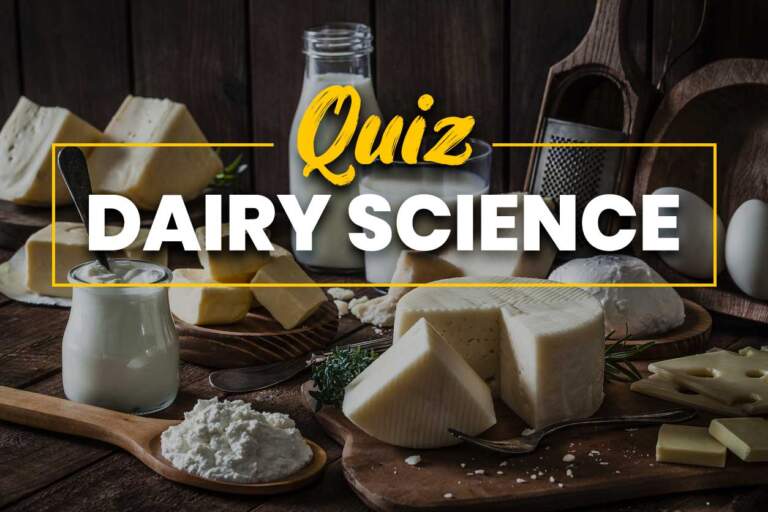
- Posted in in Quiz
Basic Dairy science quiz: Ready to check your knowledge?
- March 8, 2021

- Posted in in Basics
Is Baking Soda Acid or Base? Understanding the Chemistry
- March 16, 2021
Leave a Comment
Leave a reply cancel reply.
Your email address will not be published. Required fields are marked *
Save my name, email, and website in this browser for the next time I comment.
You might also like
Stay a while and read more posts like this
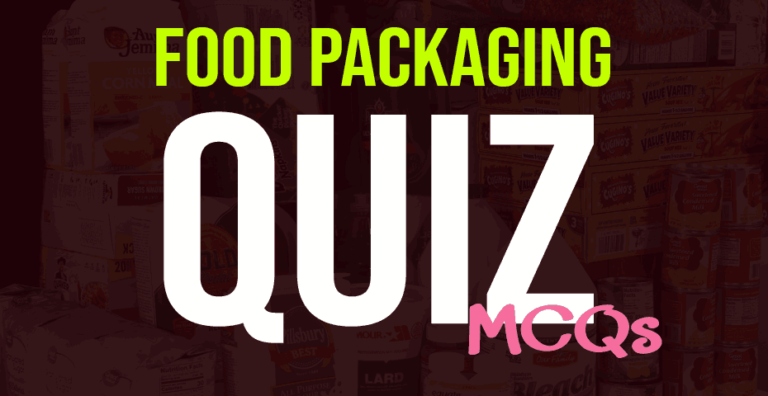
Food Packaging Quiz: Check your knowledge!
- Posted by by Editorial Staff
- February 21, 2021
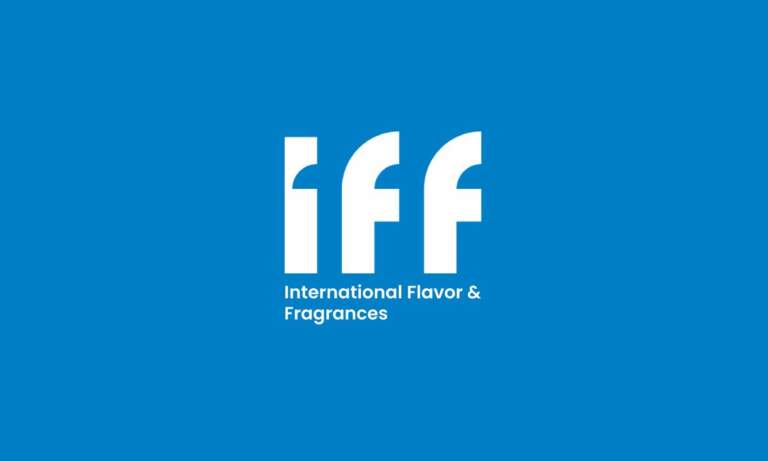
- Posted in in Jobs
Vacancy in IFF for Food Technologist I – SPO
- April 11, 2021

Discover the Magic: How Plant-Based Meat is Made
- January 7, 2024
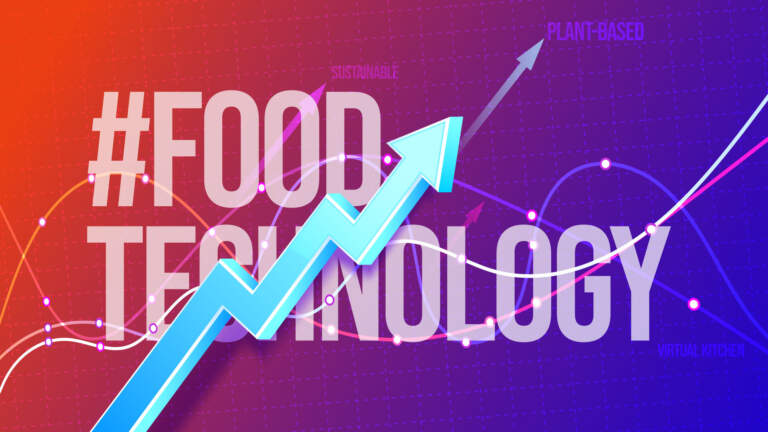
Top 6 Food Technology Trends to Watch in 2021
- January 21, 2021

How much you know about Vitamins? Take this quiz
- March 28, 2021
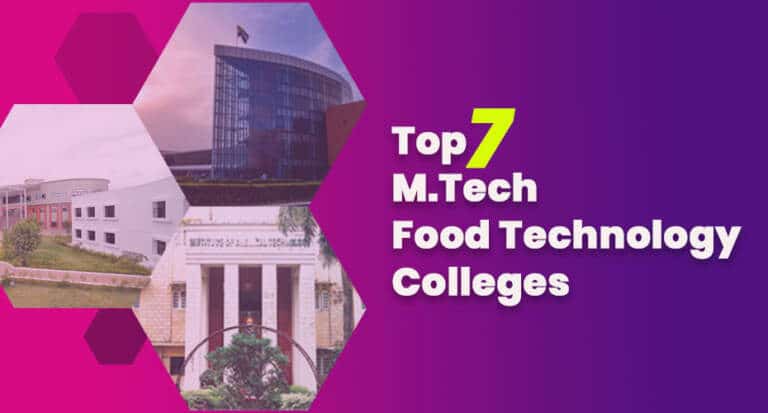
Top 7 M tech Food technology colleges in India
- March 26, 2021

How Soy sauce is made: Traditional and Chemical Method
- Posted by by Ananya Manda
- November 26, 2020
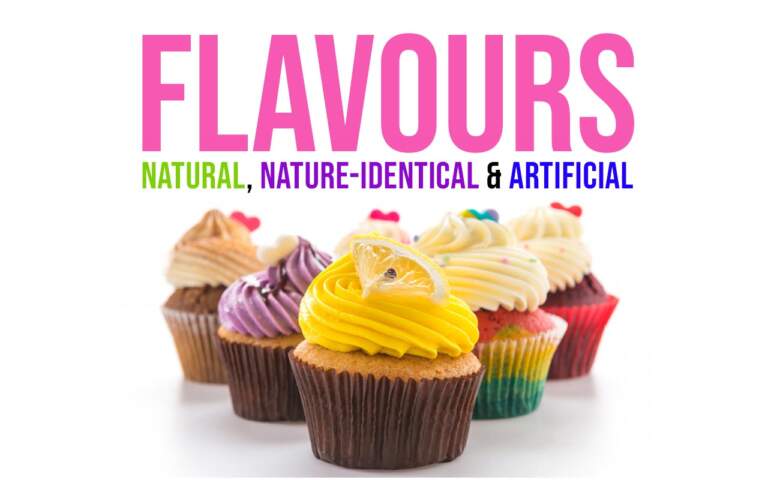
Mastering Taste: Unveiling the Truth Behind Natural, Nature-Identical, and Artificial Flavourings in Food
- August 6, 2023
Subscribe to our newsletter
Consumer-led eco-development of food products: a case study to propose a framework
PurposeThe purpose of this paper is to propose an agile methodology for the development of food products that has two key characteristics: (1) consumers are included as co-creators and (2) the assessment of environmental impacts plays a central role.Design/methodology/approachIn collaboration with a French small-to-mid-size enterprise, a research-intervention approach was used to test the agile methodology designed, which features three iterative runs of food product development. In each run, prototypes were presented and modified with consumers during focus groups. Life cycle analysis assessed the relative environmental impacts of the prototypes. The research data from consumers were mainly qualitative.FindingsThe main result of this work is the implementation of a methodology to develop new food products in an efficient way by integrating consumers' insights and environmental concerns simultaneously. The method was successful in integrating consumers as co-creators and in drawing attention to the potential environmental effects of different prototypes for the decision-making process.Research limitations/implicationsThe research is based on a single case study. Thus, generalisation to other companies is limited. The authors invite further research focussed on different types of companies. The methodology and the tools could be modified to suit a variety of contexts.Originality/valueThis work addresses the need for guidelines to integrate consumers and environmental considerations into the food development process by testing an agile methodology with a company. It contributes to the scope of sustainable and consumer-oriented food innovation management.
- Related Documents
Making sense of an innovation in a safety-critical megaproject
Purpose In megaprojects, changes in scope and organization may occur continuously. The purpose of this paper is to investigate how actors in a project network make sense of a safety-related process innovation introduced during the design phase. Design/methodology/approach An inductive single case study of an ongoing nuclear power plant project in Europe was employed to elucidate sensemaking processes using a narrative approach. Findings The empirical analysis yielded nine distinct narratives regarding the innovation each advancing a different account of the rationale for implementing the new method, and the subjects, objects and implications of the change. The findings suggest that actors’ differing framings of innovation may increase ambiguity and equivocality. Originality/value These insights augment existing knowledge of innovation management and system safety in safety-critical megaprojects by revealing project actors’ discrepant sensemaking processes with regard to innovations. To successfully manage sensemaking and its consequences for innovation adoption, managers need to take account of any such discrepancies in sensemaking processes.
The standardization model of innovation: case of high-technology enterprises
Purpose The purpose of this paper is to explore the core elements and their constitutive activities of innovation of high-technology enterprises (HTEs) in the context of China to embrace effective management processes for dealing with standards setting. Design/methodology/approach The basic methodology of the empirical investigation is a single case study of ZTE Corporation (ZTE), a leading Chinese manufacturer in the telecommunication industry. Interviews were conducted from November 2008 to July 2009 with ZTE’s managers and senior R&D employees, as well as with R&D personnel from ZTE’s partners. Interviews were carried out face to face or by emails and supplemented by telephone calls and online communications. Secondary data provide complementary information. Findings The key to innovation for HTEs pursuing dominant positions in high-technology industries is standardization-oriented innovation. To deal with special requirements raised by the peculiarities of standardization for HTEs’ innovation management, HTEs need to emphasize three core elements in innovation, i.e. strategic innovation planning, internal R&D practices and external co-operative innovation, and focus on their key component activities. Moreover, through the case study of ZTE, three enabling factors for standardization-oriented innovation – intellectual property rights (IPR) management, market focus and co-operation along industry chains – are identified. Originality/value This paper is an attempt to understand and configure key innovation activities within a standards setting. It proposes a model for innovation management of HTEs in the Chinese economy, with three critical elements and their key constitutive activities being highlighted and three enabling factors being identified.
The effect of innovative food products on shaping the image of their offerors
PurposeThe main purpose of this article is to determine the significance of selected reasons for the market success of a new food product depending on the perception of the offeror.Design/methodology/approachA cognitive-critical analysis of the literature on marketing, innovation management and image management were used to prepare the theoretical section. The results of the analysis indicate a cognitive and research gap regarding the role of innovative food products in creating their offerors' image. In order to reduce the gap, empirical studies were conducted on a sample of young Polish consumers, in which a questionnaire was used to gather primary data. The data were subjected to statistical analysis using the following methods and statistical tests: exploratory factor analysis, Kruskal–Wallis test, Pearson chi-square independence test and V-Cramer coefficient analysis.FindingsThe results of the analysis conducted indicated, inter alia, that there are no statistically significant dependencies between opinions on the importance of individual components to achieve market success by a new food product (NFP), and on the relationship between the perception of the NFP and the image of the offeror. Opinions on the impact of an offeror's image on the perception of an NFP are a feature that differentiates the factors indicating the success of NFPs in the case of three variables only.Originality/valueThe results obtained from the research have a cognitive and applicability value, characterized by originality. Until now, the role of innovative food products in creating their offerors' image has not been analyzed.
Managing positional innovation in small food enterprises. The bakery industry
Purpose The concept of positional innovation – as one of the four innovation types of the Francis and Bessant’s “4P’s” model – is an effective product innovation strategy for producers of mature and credence goods as food products are. Despite the acknowledgement as one of the major industries worldwide, positional innovations about the food products are underexplored in the managerial literature. To fill this gap, this paper first develops a theoretical analysis of the concepts. Then, by adopting a case-study research methodology, it discloses the way a bakery small enterprise manages positional innovation. Theoretical and practical implications are finally introduced and discussed. Design/methodology/approach After a literature review about the role and the characteristics of the positional innovation, the paper presents a case study of definition and implementation of managerial actions and initiatives driven by positional innovation. The aim is not to report on an inductive study, but to use this example as a picture to clarify theory and show how the various conceptual issues may be operatively applied and provide more contextual insights. Findings It emerges how a small food enterprise manages positional innovation to survive and compete in the national and international markets; the positional innovation sources are tapped into culture, social responsibility, tradition and other territorial assets of tangible and intangible nature, effectively combined to innovate the product perception and/or the utility in a use context. Originality/value “Non-technological”, simple products, like food, are underexplored and rarely seen as relevant context to investigate along the strategic and innovation management literature. Nonetheless, positional innovation is a perspective that values and credits the innovation efforts of small food products, revealing interesting managerial concepts and inspiring entrepreneurs and managers for activating and sustaining new strategies of innovation for their businesses.
“We must have the wrong consumers” – a case study on new food product development failure
Purpose – The aim of this paper is to investigate, in detail, an unsuccessful food development project that took place in 2008-2010. The case is studied from the viewpoint of an interpretive paradigm. This article concentrates on constructing the critical elements that led to a food development project failure. The plan was to have a traditional Finnish dish updated and introduced as a mass produced high-end convenience food. The project included new convenience food development, packaging design, consumer market research and a sensory study to back up the food product development on behalf of a newly established company. Theoretical grounds for the case are based on the new product development (NPD) research process in the food sector. Design/methodology/approach – The method applied is an explorative single within-case study. The research data were mainly obtained from qualitative materials that ranged from marketing plans to case study field notes compiled by the researchers. Quantitative data were also obtained from various types of materials but to a lesser extent. Findings – The results of the study show that the failure of new product development was connected to the factors identified in classic NPD research. In addition, five phenomena that contributed to product development failure were constructed: path-dependency; “information condensations”; the illusion of mutual knowledge and understanding; practices of problem definition; and window-of-opportunity effects. The results are presented in a form of analytical generalisation that can be applied, with certain restrictions, to other contexts for new food product development. Originality/value – Failure rates of NPD have remained the same for the last 30 years in the food sector. Failed NPD projects can be valuable assets for the food industry when properly analysed. Examination of successful NPD projects has provided valuable lists of success factors, but knowledge on phenomena having an effect on NPD failure is needed.
Knowledge transfer roles of subsidiaries in MNCs’ networks
Purpose Although there have been a considerable number of studies regarding subsidiary role typology in multinationals’ management literature, there appear to be few studies that consider knowledge-based role typology from the network-based perspective. The purpose of this study is to fill this gap and extend the study of Gupta and Govindarajan (1991). Thus, the study focuses on answering the following research question: Do subsidiaries have different roles in terms of knowledge flows within a multinational company (MNC)? Design/methodology/approach This empirical study has been carried out as an explorative single case study. An MNC with 15 foreign subsidiaries headquartered in Turkey, which operated in the manufacturing of household appliances and consumer electronics, has been selected as the case. Knowledge transfer is analyzed in this MNC from the network perspective. Findings Four role typologies are detected for subsidiaries of the MNC: collector transmitter, collector diffuser, converter transmitter and converter diffuser. Research limitations/implications Findings of this study are specific to this case. Testing the findings in a sample consisting of subsidiaries of MNCs producing transnational products may contribute to the generalizability of these roles. Practical implications This study offers potentially important findings for MNC managers to use. First, in this study, knowledge flows' route could be defined within MNCs’ dual network. Second, role typologies could inform MNC managers to design their MNCs’ knowledge network. Originality/value The suggested typologies are expected to more accurately define the roles of subsidiaries within contemporary MNCs which are accepted to be transformed from hierarchical structures to network-based organizations.
Frozen child: schema therapy for a forensic patient in a service for men with a diagnosis of severe personality disorder
Purpose Schema therapy has gone through various adaptations, including the identification of various schema modes. The purpose of this paper is to suggest that there may be a further dissociative mode, the “frozen child” mode, which is active for some patients, particularly those that have experienced extreme childhood trauma. Design/methodology/approach The paper is participant observer case study which is based on the personal reflections of a forensic patient who completed a treatment programme which includes schema therapy. Findings The proposed mode, “frozen child”, is supported by theoretical indicators in the literature. It is proposed that patients develop this mode as a protective strategy and that unless recognised and worked with, can prevent successful completion of therapy. Research limitations/implications Based on a single case study, this concept is presented as a hypothesis that requires validation as the use of the case study makes generalisation difficult. Practical implications It is suggested that if validated, this may be one of the blocks therapists have previously encountered that has led to the view that people with severe personality disorder are “untreatable”. Suggestions are made as to how patients with this mode, if validated, can be treated with recommendations as to the most appropriate processes to potentiate such therapy. Originality/value The suggestion of this potential “new schema mode” is based on service user initiative, arising from a collaborative enterprise between service user and clinician, as recommended in recent government policies.
Innovation and cross-functional teams
Purpose The aim of this paper is to characterize how innovation may happen through cross-functional teams (CFT) in an organization of the public sector. Design/methodology/approach A case study helped to characterize several behavior patterns, team structures and respective links with generating innovation in internal processes and public answering contexts. Findings The results highlight that formal-temporary teams present a higher capacity to generate incremental innovation in products, whereas permanent-informal teams have a higher capacity to generate innovation in the internal processes and public answering contexts. Research limitations/implications The limitations of this research relate to the fact that this is a single case study, and although it is an important case to examine innovation and CFTs, by its very nature, it is not possible to extend and generalize the obtained data to other organizations. The evaluation of its propositions was merely qualitative, and future research is needed to validate its characteristics. Practical implications Several settings of CFTs are presented, as well as their ability to generate different types of innovation, such as the computerization of documents, petitions and papers, which decreases the time to answer the taxpayer. Moreover, CFTs can help to create products, such as computer programs that can be used not only locally but also in several public organizations related to tax management. Originality/value The field research provides the perceptions of the respondents regarding CFT characteristics that can lead to specific types of innovation, as well as the types of products or services that can be generated by these processes.
Implementation of lean in IT SME company: an Italian case
Purpose In spite of huge advancement of Lean in the manufacturing sector, its advantage in the service sector is not fully investigated. The purpose of this paper is to cover this gap in particular for the information technology (IT) sector through the implementation of the Lean philosophy in a small- and medium-sized enterprise (SME), operating in the IT sector. Design/methodology/approach A case study is conducted and following the A3 model, Lean is deployed in the case company. Data were collected through on-site interviews, waste sources were identified and then countermeasures for their reduction were proposed and adopted. Findings This study reveals that the implementation of the Lean practices in an SME operating in the IT sector offers good operative and financial results, thanks to the higher productivity obtained through the reduction of non-value-added activities. Research limitations/implications This paper reports a single case study, not enough to generalize the results. Moreover, more Lean tools and practices should be tested in IT companies to assess their effectiveness. Practical implications This paper increments the knowledge base for the application of Lean and A3 model outside the manufacturing industry. This paper should assist practitioners and consultants who have the desire to understand a better way of Lean implementation in fast-growing IT industry and in SME. Originality/value Research on Lean implementation in an SME company and in IT sector is scarce. This study aims to assess the efficiency of the adoption of Lean practices following the A3 model. The results could be highly valuable for similar companies (dimension or sector), especially those that are facing transition situations in terms of size and at the same time want to improve their operations performance, efficiency and avoid waste.
The impact of business networks on foreign subsidiaries development
Purpose The purpose of this paper is to explore two specific areas pertaining to industrial networks and international business (IB). First, the authors look at how business relationships influence the internationalization in time, from the establishment of the first subsidiary in a foreign market to the following ones, and in space, that is, across different markets. Second, the authors investigate how an increasing external network dependence of subsidiaries in their internationalization may cause a detachment of a subsidiary from the mother company as its knowledge becomes insufficient to guide a subsidiary’s internationalization. Design/methodology/approach This paper utilizes an exploratory, longitudinal, single-case study of Loccioni – a manufacturer of measuring and automatic control systems for industrial customers – to illustrate the specific dynamics of the influences of industrial networks on the internationalization of subsidiaries. Findings The case study helps to elucidate the roles, entailing also free will and own initiative, of small suppliers’ subsidiaries which operate inside several global factories, and how “surfing” on many different global factories, by means of several local subsidiaries, actually supports these suppliers’ own international developments. This notion adds to our understanding of the global factory phenomenon a supplier focus that stresses how the role of suppliers is not merely that of being passive recipients of activities and directions from a focal orchestrating firm, but can also be that of initiative-takers themselves. Originality/value The paper contributes to the IMP tradition by providing a multi-layered and geographically more fine-grained view of the network embedding companies that operate on internationalized markets. This paper thereby sheds light on a less investigated area of research within the IMP tradition: the link between internationalization in different countries and the interconnectedness between the industrial networks spanning these countries. At the same time, this paper contributes to IB theories by showing how a late-internationalizing SME can enter highly international markets by “plugging into” several established “Global Factories” as a way to exploit further opportunities for international expansion.
Export Citation Format
Share document.
To read this content please select one of the options below:
Please note you do not have access to teaching notes, consumer-led eco-development of food products: a case study to propose a framework.
British Food Journal
ISSN : 0007-070X
Article publication date: 23 March 2021
Issue publication date: 29 June 2021
The purpose of this paper is to propose an agile methodology for the development of food products that has two key characteristics: (1) consumers are included as co-creators and (2) the assessment of environmental impacts plays a central role.
Design/methodology/approach
In collaboration with a French small-to-mid-size enterprise, a research-intervention approach was used to test the agile methodology designed, which features three iterative runs of food product development. In each run, prototypes were presented and modified with consumers during focus groups. Life cycle analysis assessed the relative environmental impacts of the prototypes. The research data from consumers were mainly qualitative.
The main result of this work is the implementation of a methodology to develop new food products in an efficient way by integrating consumers' insights and environmental concerns simultaneously. The method was successful in integrating consumers as co-creators and in drawing attention to the potential environmental effects of different prototypes for the decision-making process.
Research limitations/implications
The research is based on a single case study. Thus, generalisation to other companies is limited. The authors invite further research focussed on different types of companies. The methodology and the tools could be modified to suit a variety of contexts.
Originality/value
This work addresses the need for guidelines to integrate consumers and environmental considerations into the food development process by testing an agile methodology with a company. It contributes to the scope of sustainable and consumer-oriented food innovation management.
- Intervention-research
- Open innovation
- Sustainability
Acknowledgements
The authors wish to thank the contributors to this project: the Région Bretagne for the financial support, the company GlobeXplore for allowing these experiments and the researchers Vincent Boly, Anne Saint-Eve, Catherine Renard, Jean-Marc Ferrandi, Gaëlle Pantin-Sohier, Gwenola Yannou-Le Bris, Cécile Grémy-Gros, Anthony Delamarre, and Aurélie Perrin for their academic support. Funding : The research project was financed by the Région Bretagne. Conflict of interest : The authors declare no conflicts of interest.
Thomas, C. , Maître, I. and Symoneaux, R. (2021), "Consumer-led eco-development of food products: a case study to propose a framework", British Food Journal , Vol. 123 No. 7, pp. 2430-2448. https://doi.org/10.1108/BFJ-11-2020-1050
Emerald Publishing Limited
Copyright © 2021, Emerald Publishing Limited
Related articles
We’re listening — tell us what you think, something didn’t work….
Report bugs here
All feedback is valuable
Please share your general feedback
Join us on our journey
Platform update page.
Visit emeraldpublishing.com/platformupdate to discover the latest news and updates
Questions & More Information
Answers to the most commonly asked questions here
- Browse All Articles
- Newsletter Sign-Up

- 25 Jan 2021
- Working Paper Summaries
India’s Food Supply Chain During the Pandemic
Policy makers in the developing world face important tradeoffs in reacting to a pandemic. The quick and complete recovery of India’s food supply chain suggests that strict lockdown measures at the onset of pandemics need not cause long-term economic damage.
- 08 Jun 2020
Food Security and Human Mobility During the Covid-19 Lockdown
COVID-19 represents not only a health crisis but a crisis of food insecurity and starvation for migrants. Central governments should ensure that food security policies are implemented effectively and engage with local governments and local stakeholders to distribute food to migrants in the immediate term.

- 29 May 2020
How Leaders Are Fighting Food Insecurity on Three Continents
The pandemic could almost double the number of people facing food crises in lower-income populations by the end of 2020. Howard Stevenson and Shirley Spence show how organizations are responding. Open for comment; 0 Comments.
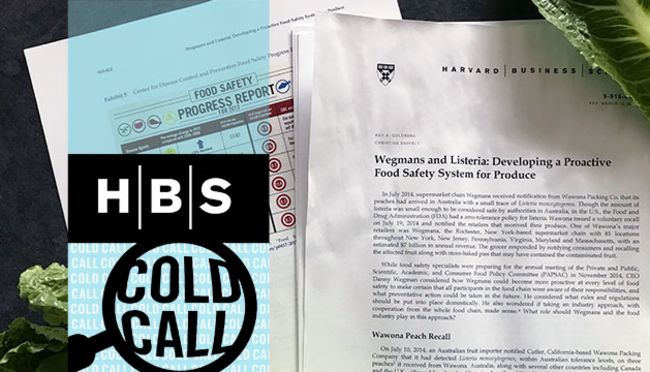
- 31 Jan 2019
- Cold Call Podcast

How Wegmans Became a Leader in Improving Food Safety
Ray Goldberg discusses how the CEO of the Wegmans grocery chain faced a food safety issue and then helped the industry become more proactive. Open for comment; 0 Comments.

- 15 Nov 2018
Can the Global Food Industry Overcome Public Distrust?
The public is losing trust in many institutions involved in putting food on our table, says Ray A. Goldberg, author of the new book Food Citizenship. Here's what needs to be done. Open for comment; 0 Comments.
- 15 Mar 2018
Targeted Price Controls on Supermarket Products
Governments sometimes consider targeted price controls when popular goods become less affordable. Looking at price controls in Argentina between 2007 and 2015, this study’s findings suggest that new technologies like mobile phones are allowing governments to better enforce targeted price control programs, but the impact of these policies on aggregate inflation is small and short-lived.

- 26 Jun 2017
- Research & Ideas
How Cellophane Changed the Way We Shop for Food
Research by Ai Hisano exposes cellophane's key role in developing self-service merchandising in American grocery stores, and how its manufacturers tried to control the narrative of how women buy food. Open for comment; 0 Comments.
- 31 May 2017
- Sharpening Your Skills
10 Harvard Business School Research Stories That Will Make Your Mouth Water
The food industry is under intense study at Harvard Business School. This story sampler looks at issues including restaurant marketing, chefs as CEOs, and the business of food science. Open for comment; 0 Comments.
- 18 Nov 2016
Standardized Color in the Food Industry: The Co-Creation of the Food Coloring Business in the United States, 1870–1940
Beginning in the late 19th century, US food manufacturers tried to create the “right” color of foods that many consumers would recognize and in time take for granted. The United States became a leading country in the food coloring business with the rise of extensive mass marketing. By 1938, when Congress enacted the Food, Drug, and Cosmetic Act, the food coloring business had become a central and permanent component of food marketing strategies. This paper shows how food manufacturers, dye makers, and regulators co-created the food coloring business. Food-coloring practices became integrated into an entire strategy of manufacturing and marketing in the food industry.
- 16 May 2016
Food Safety Economics: The Cost of a Sick Customer
When restaurants source from local growers, it can be more difficult to assess product safety—just another wrinkle in high-stakes efforts to keep our food from harming us. Just ask Chipotle. John A. Quelch discusses a recent case study on food testing. Open for comment; 0 Comments.
- 15 May 2007
I’ll Have the Ice Cream Soon and the Vegetables Later: Decreasing Impatience over Time in Online Grocery Orders
How do people’s preferences differ when they make choices for the near term versus the more distant future? Providing evidence from a field study of an online grocer, this research shows that people act as if they will be increasingly virtuous the further into the future they project. Researchers examined how the length of delay between when an online grocery order is completed and when it is delivered affects what consumers order. They find that consumers purchase more "should" (healthy) groceries such as vegetables and less "want" (unhealthy) groceries such as ice cream the greater the delay between order completion and order delivery. The results have implications for public policy, supply chain managers, and models of time discounting. Key concepts include: Consumers spend less and order a higher percentage of "should" items and a lower percentage of "want" items the further in advance of delivery they place a grocery order. Encouraging people to order their groceries up to 5 days in advance of consumption could influence the healthfulness of the foods that people consume. Similarly, asking students in schools to select their lunches up to a week in advance could considerably increase the healthfulness of the foods they elect to eat. Online and catalog retailers that offer a range of goods as well as different delivery options might be able to improve their demand forecasting by understanding these findings. Closed for comment; 0 Comments.
- Publications
- Conferences & Events
- Professional Learning
- Science Standards
- Awards & Competitions
- Instructional Materials
- Free Resources
- American Rescue Plan
- For Preservice Teachers
- NCCSTS Case Collection
- Partner Jobs in Education
- Interactive eBooks+
- Digital Catalog
- Regional Product Representatives
- e-Newsletters
- Bestselling Books
- Latest Books
- Popular Book Series
- Prospective Authors
- Web Seminars
- Exhibits & Sponsorship
- Conference Reviewers
- National Conference • Denver 24
- Leaders Institute 2024
- National Conference • New Orleans 24
- Submit a Proposal
- Latest Resources
- Professional Learning Units & Courses
- For Districts
- Online Course Providers
- Schools & Districts
- College Professors & Students
- The Standards
- Teachers and Admin
- eCYBERMISSION
- Toshiba/NSTA ExploraVision
- Junior Science & Humanities Symposium
- Teaching Awards
- Climate Change
- Earth & Space Science
- New Science Teachers
- Early Childhood
- Middle School
- High School
- Postsecondary
- Informal Education
- Journal Articles
- Lesson Plans
- e-newsletters
- Science & Children
- Science Scope
- The Science Teacher
- Journal of College Sci. Teaching
- Connected Science Learning
- NSTA Reports
- Next-Gen Navigator
- Science Update
- Teacher Tip Tuesday
- Trans. Sci. Learning
MyNSTA Community
- My Collections
Case Studies: Food Science & Technology
All food science & technology case studies.
What’s in Your Food?
By Bwalya Lungu
Deep in the Weeds of Organic Farming
By Matthew S. Taylor, Mariëlle H. Hoefnagels, Mark E. Walvoord
Fishing Midst the Morning Dew
By Adela M. Acosta
Through the Grater
By Helen S. Joyner, Clinton Stevenson
Yeast Cryptography
By Brian K. Sato, Eduardo Cruz-Hinojoza, Duyen Dinh-Dang
Aisles of Confusion
By Justin A. Pruneski, Enya J. Granados, Kaylee M. Wilburn
Snow White Apples?
By Ann T.S. Taylor
Organic Food
By Suzanne R. Carpenter, Richard H. Wallace
Gastronomic Gastroenteritis at The Fat Duck
By Nienke E. van Houten
Potato Chip Problems
By Helen S. Joyner, Brennan Smith
- Programmes Consumer Information for SCP Sustainable Buildings and Construction Sustainable Food Systems Sustainable Lifestyles & Education Sustainable Public Procurement Sustainable Tourism
- Network Members Directory Organisations
Sustainable Development Goals and Agro-Food System: the Case Study of the Future Food Institute
- Published on January 14, 2021
Actors involved:
Share your work on sustainable consumption and production, you might also be interested in.

Circular construction. Rethinking construction processes and energy consumption in construction and buildability transformation

Circular Built Environment Working Group: exploring social dimensions and measuring circularity in the buildings and construction sector

Declaration de Chaillot at the first Buildings and Climate Global Forum
Sustainable buildings and construction, sustainable public procurement, select a language.
(Stanford users can avoid this Captcha by logging in.)
- Send to text email RefWorks EndNote printer
Case studies in food product development
Available online, more options.
- Find it at other libraries via WorldCat
- Contributors
Description
Creators/contributors, contents/summary.
- Part 1 Introduction: New product development: systematic industrial technology. Part 2 Product development strategy and management: The multinational food business - strategic, organisational and management issues for product development
- The Food Research Centre - assisting small and medium sized industry in Southern Thailand. The Supermarket Industry - private label brand development
- Rural Agroenterprise - cassava development in Latin America. Part 3 Product development process: From farm to consumer - pioneering an early nutraceutical, Stolle milk
- From concept to international company - development of a new pet food product
- From kitchen to market - first came the oat cake, now the oat bake, a traditional product for today's consumers
- From basic research to marketable product - success and failure of instant baked potatoes. Part 4 Technological development: Radical process development - cutting techniques for an aerated sugar confectionery
- Process innovation from research and development to production in a large company - development and commercialisation of a low temperature extrusion process
- Up-scaling from development to production by small manufacturers - fishing, baking and sauce industries
- Spirit of entrepreneurship in commercialisation - product and process development of coconut beverage mix. Part 5 Consumer and market research: Sensory testing in the product development process - the sensory researcher as a trusted advisor
- Consumer research in the early stages of new product development - market-oriented development of meal compliment beverages
- Consumer research in product design - market-oriented development of healthy vegetable-based food for children
- Customer-centric product development - supermarket private label brands. Part 6 Product development in practice: Product design, process development and manufacturing - a roadmap for the technologist
- A roadmap through marketing and launching in product development. Part 7 Education for new product development: Effective education for product development - building new product development courses in Thailand.
- (source: Nielsen Book Data)
Bibliographic information
Browse related items.
- Stanford Home
- Maps & Directions
- Search Stanford
- Emergency Info
- Terms of Use
- Non-Discrimination
- Accessibility
© Stanford University , Stanford , California 94305 .
- Public Entities
- Enterprises
We believe in change driven by technology and innovation.
Meet the brains behind our smooth running and powerful machine.
Join our team of experts to make a difference in the real world.
Learn about Appinventiv's product lifecycle development process.
Our software development services are built to evolve your business idea into a successful growth story
- Mobile first Design
- Supply chain management
- Legacy Modernization
- ERP Software development
- AR/VR Development
- IoT Development
- Microservices
- Cloud Managed Services
- Cloud Consulting
- Business Intelligence
- NFT Marketplace
- Metaverse Development
- Dapp development
- Healthcare IT Consulting Services
- Generative AI
that deploy customized solutions in a wide range of industries
to steadfast success for top globally leading brands
A leading digital platform to offer engaging shopping experience to users
A transforming ERP Solution for the world's largest furniture retailer
A mobile app to digitalize & expand KFC's digital footprint
A refined UX strategy for Domino's to increase their conversion rate by 23%
The MIT Innovation award-winning app with $52 Million funding reshaping the employment landscape
A SaaS-based financial literacy and smart money management platform for kids

A mobile app to digitalize & expand KFC's digital footprint

- Schedule a call contact us
Unveiling the Taste of Success in Food Delivery App Development – 3 Business Case Studies

Statistical Facts about Food Delivery Apps – Because Numbers Don’t Lie
Global growth of food delivery apps, revenue generation from the food delivery market, mobile app usage trends.
- Impact of Global Pandemic - COVID-19
Benefits of Food Delivery Mobile App Development
Increased reach and higher revenue, eliminates the entry barriers, unmatched convenience for consumers, personalized user experience, increased user engagements, predictive analytics, appinventiv: a pioneer in food delivery app development, kfc case study, pizza hut case study, domino’s case study, food delivery app development cost, how to make a food delivery app, leverage appinvenitv’s experience to build a food delivery app.
In a world of evolving lifestyles and constant motion, how we dine is changing dramatically. We crave something quick and convenient to satisfy our culinary desires. And as our culinary cravings meet the digital age, food delivery applications emerge as a revolutionary solution, redefining how we enjoy the delights of gastronomy.
In today’s fast-paced and digital landscape, on-demand delivery apps have become an inseparable part of modern lifestyle, with their widespread popularity and penetration in our lives continuing to grow.
The proliferation of food delivery apps has contributed to a significant diversification of culinary choices available to consumers. According to industry reports, users now have access to an extensive array of restaurants and cuisines at their fingertips, fostering a culture of exploration and discovery within the realm of gastronomy.
So, what factors contribute to the immeasurable success of food delivery apps? Well, the primary driver is a food delivery app development company that fuels the fire of building a cutting-edge solution that can efficiently satiate consumers’ desire for convenience and culinary cravings.
Appinventiv, a leading player in app development, plays a pivotal role in building next-generation restaurant applications . We have a proven track record of redefining the success of food delivery giants like KFC, Pizza Hut, and Domino’s.

Let’s get a sneak peek into the growing dominance of food delivery mobile app development, the statistical facts, cost, process, and case studies of food delivery businesses.
The evolution of food delivery services has been marked by a surge in demand for digital applications. Changing consumer preferences, coupled with the need for speed and convenience, have driven the adoption of food delivery apps. Let’s throw light on some statistical facts about food delivery services:
According to Statista , the global food delivery market hit $2.52 trillion in 2021 and is anticipated to cross $4.43 trillion by 2028, growing at a CAGR of 9.9% from 2021 to 2028. This underscores the sustained and robust growth of the food delivery industry.

The global revenue from the online food delivery market is projected to reach a value of $329.7 billion by 2027. This growth trajectory demonstrates the massive potential for businesses to capture a significant market share.
As of 2022, the number of mobile app downloads related to food and drink worldwide amounted to about $717 million. This statistic highlights the increasing reliance on mobile apps for food-related activities, from ordering meals to exploring new culinary experiences.
Impact of Global Pandemic – COVID-19
The pandemic accelerated the adoption of food delivery apps, with a surge in demand for contactless dining options. A McKinsey report noted a 78-93% increase in the use of food delivery apps during the early stages of the global health crisis.
The food industry is growing exponentially, giving entrepreneurs countless reasons to invest in food delivery app development and emerge as key players in this rewarding sector. Here are some of the reasons why leveraging the power of food delivery apps can be highly profitable for businesses:

For the restaurant industry, using a mobile app translates into capturing a broader consumer segment worldwide, satisfying the needs of potential users who might otherwise miss their offerings. This extended reach can significantly boost sales and increase revenue, contributing to the overall growth and success of the restaurant.
DoorDash is a leading example of a global food delivery business, catering to customers’ culinary needs across Canada, Australia, and the US.
The food delivery sector is well-regarded for its minimal entry barriers, fostering an environment that readily embraces emerging startups and entrants. Unlike traditional businesses that require substantial initial investments and intricate infrastructures, the on-demand food delivery solutions empower aspiring entrepreneurs to start their food delivery ventures with comparatively modest investments.
Also Read: 3 Top Reasons to Invest in a Mobile App for Your Restaurant
Mobile apps bring unparalleled convenience to food lovers, bringing a host of culinary items from different regions to their fingertips. With just a few taps on their smartphones, users can effortlessly browse through diverse menus, place orders, and track their deliveries in real-time. This streamlined process eliminates the need for traditional methods like phone calls or physical menus, offering a great level of convenience that aligns with today’s fast-paced lifestyle.
Mobile apps enable a personalized user experience, allowing businesses to tailor their offerings based on user preferences and behaviors. With the emerging integration of data analytics and artificial intelligence in the restaurant industry, businesses can predict customer choices, suggest personalized menus, and even offer exclusive discounts or coupons. This level of personalization enhances the overall user experience and increases their loyalty to the brand.
A feature-rich food delivery app enables restaurants to interact actively with their customers through push notifications , messages, emails, or even chatbots . This helps businesses inform users about their latest offers, loyalty programs, and lucrative deals and discounts, keeping them engaged in your offerings.
Mobile apps provide restaurant owners with valuable data analytics . From tracking order trends to comprehending peak hours, these insights empower businesses to make informed decisions. Additionally, mobile apps streamline the ordering and delivery management process, reducing the risk of errors and ensuring operational efficiency.
These are some of the most common benefits of food delivery app development . As technology advances, businesses that opt for mobile app solutions are poised to experience more transformational advantages and sustained success in the competitive landscape of the food delivery industry.
Related Article: A Comprehensive Guide on Using Predictive Analytics for Mobile Apps
We, as a leading IT company, have established ourselves as a frontrunner in app development, particularly in the food delivery sector. With a proven track record and a commitment to innovation, we have successfully crafted innovative solutions for global businesses that elevate user experiences and drive growth.
Our approach involves a meticulous understanding of client needs, leveraging cutting-edge technologies, using the best security measures, and delivering apps that stand out in the competitive market.
Let us elucidate the case studies of three business giants in the food industry and witness how we turned their distinctive vision into an enticing reality, capturing the eyes of users worldwide.
KFC , a leading fast-food company with a global presence in 150+ countries, operates under Americana Group in the Middle East and is the world’s second-largest restaurant chain.
Challenges Faced by KFC
- Nearly 90% of KFC’s total orders were coming through aggregator apps, raising concerns about the brand’s dependency on third-party platforms.
- With a significant portion of orders funneled through aggregator apps, KFC faced increased operational costs and the risk of potential damage to the brand’s digital image.
- The challenges escalated when KFC started receiving negative reviews on its own platform, primarily related to a poor user experience.
Appinventiv’s Strategic Solution
KFC, facing such challenges in the Middle East, turned to Appinventiv for a comprehensive solution with a vision to develop seven KFC mobile applications within a year. We took these challenges as an opportunity to prove our expertise by building a robust direct-to-consumer digital channel for KFC.
We developed seven custom food delivery apps in the Middle East across – the UAE, KSA, Kuwait, Egypt, Qatar, Bahrain, and Oman, ensuring a personalized user experience for specific regions and demographics.
Results and Impact
The development and launch of seven KFC mobile applications within the stipulated timeframe helped KFC witness a transformative shift in its digital delivery channel, leading to significant positive outcomes:
- 22% increase in conversion rate
- 4.5 average rating on the Google Play Store and App Store
- Over 50% of the total orders coming through the app
- Over 60% increase in repeat purchases across channels
- Highest customer lifetime value across all order modes
- Reduced resilience on aggregator apps from 90% to 50%
- 30,000+ orders filled through the app per day.

Pizza Hut , one of the largest multinational restaurant chains, operates 17,639 restaurants worldwide as of 2020.
Challenges Faced by Pizza Hut
- Pizza Hut faced challenges in maintaining a strong digital presence. Their existing app struggled to keep pace with modern standards, hindering its performance.
- The app lacked an extensible and scalable architecture, limiting its ability to adapt to the evolving needs of today’s digital age.
- Customers encountered difficulties navigating the app, placing orders, and enjoying a seamless interaction with Pizza Hut’s offerings, leading to poor user experience.
Our team of 1200+ tech evangelists recognized the need for a comprehensive overhaul of Pizza Hut’s app. Thus, we conducted thorough research to understand the unique needs of Pizza Hut’s target audience and created a user-friendly design that resonated with users, ensuring a more personalized and engaging experience.
To meet industry standards, we leveraged the latest tools and technologies to enhance the app’s functionality and keep it at the forefront of trends.
The redesigned app provided Pizza Hut with a revitalized digital presence, aligning with industry standards, meeting users’ expectations, and elevating the brand’s image in the digital space, which resulted into:
- 50K app downloads
- 30% increase in conversion rates
- 7 seconds increase in screen transition time
- Improved customer engagement and business growth
- Increased user interactions and order placements

Domino’s is a well-recognized powerhouse of pizza delivery worldwide, operating over 14,000 pizza restaurants in 85+ countries and delivering more than 1.5 million pizzas every day.
Challenges Faced by Domino’s
- Domino’s experienced a rising bounce rate on their mobile app, indicating that users were navigating away without completing orders.
- The company faced challenges in retaining customers and received negative reviews in terms of poor app experience, difficulty in placing orders, and an in-app user journey.
- One of the major concerns the brand faced was subpar UI/UX design , which led to a decrease in customers’ attention and engagement on the brand’s app.
Domino’s collaborated with us to resolve its pressing challenges and redefine its business identity in the market. We started the journey with a deep analysis of the core issues hindering the performance of Domino’s pizza delivery app. We dove deep into customers’ reviews and pinpointed the problem area that was making users’ in-app journeys complex.
We developed strategic solutions to revamp the UI/UX design, streamlining the app’s functionality, making it more efficient, and enhancing the overall user experience.
- The collaboration with Appinventiv facilitated the reinvention of Domino’s business image, reinforcing its position in the competitive food delivery market.
- Our refined UI/UX strategy reduced the bounce rate and increased the mobile app conversion rate by 23%.
- The UI/UX redesign contributed to a significant improvement in customer engagement. The users who were once leaving the app without placing the orders now spend time within the app to track their orders in real time.

When planning to make a food delivery app like KFC, Pizza Hut, or Domino’s, people often contemplate the restaurant app development cost . While the cost to build the latest food delivery app is one of the most crucial considerations, it is challenging to quote an exact amount as the Pizza Hut, Domino’s, or KFC food delivery app development cost significantly varies depending on multiple factors.
Some of the most important factors that affect the food delivery application development cost are:
- The intricacy and sophistication of the app’s design, level, features, and functionalities.
- The number of third-party plugins available in the app to improve user engagement.
- The targeted platform (Android, iOS, or cross-platform ) on which the app will run.
- Intensity and frequency of regular maintenance and updates required to ensure the apt app performance.
- The geographic location of the chosen mobile app development company. For instance, developers in regions like the US or the UK charge a whopping amount of $90-$110 per hour, while developers in India typically charge a more budget-friendly price, i.e., $20-$70 per hour.
On average, KFC, Pizza Hut, or Domino’s food delivery app development costs range between $30,000 to $300,000 or more, depending on the aforementioned cost-influencing factors.
Here is a visual presentation of the factors affecting food delivery mobile app development cost

There is no better way to tap into the flourishing food market than to make a feature-rich application for your business. However, making an app for food delivery is a complex and challenging process, requiring professional expertise and experience in building similar applications.
The food delivery app development process is quite similar to building any other mobile app. It passes through the same stages of project planning, design conceptualization, feature integration, coding and development, rigorous testing, and ultimate deployment.

In straight terms, developing a food delivery app like KFC, Pizza Hut, or Domino’s requires meticulous planning, visually appealing UI/UX design, the right tech stack, seamless feature integration, and continual maintenance.
Thus, you must consider outsourcing your project to a professional app development company to ensure a smooth and successful food delivery app development process. Collaborating with an experienced restaurant app development company with a proven history of developing similar solutions not only improves your chances of building a successful solution but also ensures its ongoing success in the competitive market.
For an in-depth understanding of the food delivery application development process, delve into our comprehensive guide on Mobile App Development for Businesses .
You may like to know: How to start your own food delivery business.

Appinventiv’s expertise in food delivery mobile app development has played a pivotal role in revamping the applications of industry giants – KFC, Pizza Hut, and Domino’s, redefining their brand image.
We are committed to shaping the future of food delivery apps through the effective utilization of cutting-edge technologies, innovative solutions, a deep understanding of market dynamics, and a commitment to staying ahead of industry trends.
These case studies serve as a testament to the transformative impact that our strategic app development services can have on the success of food delivery businesses.
So, if you also want to create a food delivery app like KFC, Pizza Hut, or Domino’s, don’t hesitate to partner with us . Our skilled team will stand by you throughout the food delivery app development process, helping you take your business to greater heights.
Q. What features can be added to build a food delivery app?
A. Building a successful food delivery app requires incorporating multiple features to enhance user experience. Mentioned below are some of the most essential features to add to a food delivery app :
- User registration and profiles
- Real-time order tracking
- Secure payment gateway
- Search and filters
- Rating and reviews
- Promotions and discounts
- Multiple platform compatibility
- Referrals and rewards
- Push notifications
- Multi-language support
- Geolocation services
- Social media integration
- Customer support chatbot
- Offline accessibility
- Analytics and reporting
Q. How much time does it take to make a food delivery app?
A. The time required to develop a food delivery app can vary significantly based on several factors, including the app’s complexity, choice of platform (iOS, Android, or hybrid), feature list, tech stack, UI/UX design, and the location of the app development company.
On average, a simple app with basic features can take around 4 to 9 months to develop, while a more complex app with advanced features may take 9 months to a year or more.
You should define your clear project objectives and discuss your app idea with an experienced development team to know the exact timeline it will take to bring your vision to life.
Q. How much does it cost to develop a food delivery app?
A. Determining the cost of developing a food delivery app involves considering various factors such as the app’s features, complexity, platform choice, design intricacies, and the location of the development team.
On average, food delivery app development costs range between $30,000 to $300,000 or more.

How Much Does It Cost to Develop an App Like KFC?
The restaurant industry is evolving by leaps and bounds, catering to the diverse needs of its customers. as per a report, the fast food market is growing—it jumped from $610.66 billion in 2022 to $652.73 billion in 2023 and is expected to reach $772.17 billion by 2027. a robust app can be a key part….

How to Start Your Own Food Delivery Business in 2024?
You might be running a restaurant already or in the process of starting one, but shifting online would help you expand better. and even though it might seem like a task to start a food delivery business from scratch, you only need a brilliant idea, the right software development team, and the motivation to make….

How to build an online food delivery app like Talabat?
Technology is paving its way in the food industry rapidly. the ease and convenience of ordering food and quick deliveries are changing how food businesses operate. with the ease of ordering online, the growth in the online food delivery application has shown a steep upward trend. as per the report by statista, the number of….

B-25, Sector 58, Noida- 201301, Delhi - NCR, India
79, Madison Ave Manhattan, NY 10001, USA
Appinventiv Australia, East Brisbane QLD 4169, Australia
Tiger Al Yarmook Building, 13th floor B-block Al Nahda St - Sharjah
Suite 3810, Bankers Hall West, 888 - 3rd Street Sw Calgary Alberta
1600+ transformation engineers delivered
3000+ game-changing products.
Case Studies Subscribe
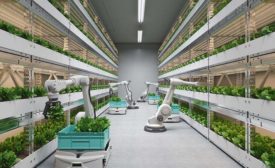
Applying Industry 4.0 to Food Safety
Industry 4.0 relies on a group of disruptive technologies to drive insights and speed in decision-making. This article demonstrates the potential benefits that can be created and captured across a food business through thoughtful and deliberate application of Industry 4.0 technologies.

Developing Food Safety Leadership Skills: Building the Workforce of Tomorrow
This article, authored by speakers summarizing their workshop at the 2023 Food Safety Summit, explores components for food safety professional development and business management to help empower food safety leaders throughout their careers and in their day-to-day work.
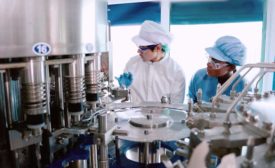
Root Cause Analysis: Putting It to Work for You
At the 2023 Food Safety Summit, a dynamic workshop brought together leading experts to introduce the concepts, methods, and different tools of root cause analysis (RCA). Participants learned how to dig into systems and find meaningful data to identify the root causes of issues develop impactful solutions that prevent problems from recurring. An RCA session at the 2024 Summit will further explore these concepts. This article discusses applied RCA and the Food Safety Summit associated education offered on this topic.
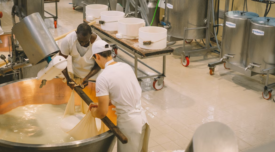
Global Case Study on FSMS Implementation in Small- to Medium- Sized Companies in Developing Regions
A recent review of case studies on food safety management systems (FSMS) in small- to medium-sized food businesses in developing regions around the world has painted a picture of global FSMS developments and identified the constraints and advantages associated with their implementation.
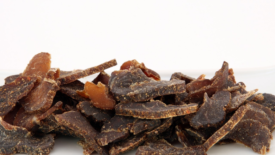
A Melting Pot of Cultures—and Microbial Risks
The U.S. and Canada are melting pots of cultures, and one of the most evident expressions of this diversity can be found in the variety of ethnic foods available in markets. While the influx of these foods has brought new and exciting flavors to North American palates, it has also brought the risk of new microbial hazards.

Salmonella Outbreak Linked to Italian-Style Meats
Since early 2022, CDC and FDA have investigated an ongoing Salmonella outbreak linked to Italian-style meats. The outbreak has affected at least 36 people across 17 states.
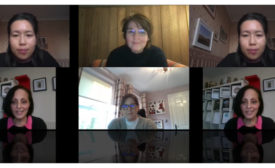
Using Frontline Feedback to Nudge Food Safety Culture Improvements
To improve the food safety culture of an organization, it is critical that a key focus be the frontline employees. A proven tool to improve frontline employee engagement in effective food safety behaviors is the concept of "nudging"—a regular cadence of small, easily controlled, and easily taken actions to make a change process more effective, manageable, and sustainable. This article will showcase real-life examples of nudging and share successful examples.
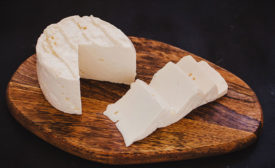
Recent Outbreaks of Listeriosis Linked to Fresh, Soft Queso Fresco-Type Cheeses in the U.S.
This article presents the key findings of outbreak investigations from 2014–2021 that have been linked to the consumption of fresh, soft queso fresco-type cheeses in the U.S. The authors outline some of the specific circumstances that small manufacturers of all cheeses may encounter in an effort to provide lessons learned and highlight available resources.

Looking Back: E.coli O157:H7 and the Legacy of Dr. David Theno
This article looks back at the events of the 1993 E. coli outbreak associated with hamburgers served at Jack in the Box restaurants along the U.S. West Coast, examining the regulatory changes inspired by the fatal outbreak and its impact. Also discussed are the corporate and industry changes, spearheaded by Dr. David Theno, that set new standards for leadership and management in foodservice and food safety.
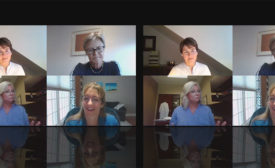
How to Adapt Food Safety Culture Efforts to Functional Ways of Working
Food safety guiding principles are the same for all companies, but how they are used is dependent not only on the uniqueness of the company but also upon the biases and culture inherent to the company. The latter are often underestimated in their importance and impact. To address these topics, Food Safety Magazine recently hosted a webinar that featured a group of experienced senior leaders and a food safety culture expert as the panelists and moderator, which this article summarizes.
Got Root Cause?
On Demand: Join subject matter experts as they review getting to the core problem (root cause analysis). The session will include break-outs and case studies to train analysis teams.
Get our eMagazine delivered directly to your inbox
Stay in the know on the latest science-based solutions for food safety..
Copyright ©2024. All Rights Reserved BNP Media.
Design, CMS, Hosting & Web Development :: ePublishing
Advertisement
Supported by
Columbia Bars Student Protester Who Said ‘Zionists Don’t Deserve to Live’
After video surfaced on social media, the student, Khymani James, said on Friday that his comments were wrong.
- Share full article

By Katherine Rosman
Katherine Rosman reported from the campus of Columbia University.
Columbia University announced on Friday that it had barred from its campus a leader in the pro-Palestinian student protest encampment who declared on video in January that “Zionists don’t deserve to live.”
Video of the incendiary comments resurfaced online Thursday evening, forcing the school to again confront an issue at the core of the conflict rippling across campuses nationwide: the tension between pro-Palestinian activism and antisemitism.
The student, Khymani James, made the comments during and after a disciplinary hearing with Columbia administrators that he recorded and then posted on Instagram.
The hearing, conducted by an administrator of the university’s Center for Student Success and Intervention , was focused on an earlier comment he shared on social media, in which he discussed fighting a Zionist. “I don’t fight to injure or for there to be a winner or a loser, I fight to kill,” he wrote.
A Columbia administrator asked, “Do you see why that is problematic in any way?”
Mr. James replied, “No.”
He also compared Zionists to white supremacists and Nazis. “These are all the same people,” he said. “The existence of them and the projects they have built, i.e. Israel, it’s all antithetical to peace. It’s all antithetical to peace. And so, yes, I feel very comfortable, very comfortable, calling for those people to die.”
And, Mr. James said, “Be grateful that I’m not just going out and murdering Zionists.”
In announcing their decision to bar Mr. James from campus, the university did not make clear if he had been suspended or permanently expelled.
Other protest groups condemned the comments and pointed out that one student’s statements do not reflect the tenor of the movement as a whole. But the remarks were widely shared on social media and go to the heart of a question that has animated criticism of the protests: How much of the movement in support of the Palestinian people in Gaza is tainted by antisemitism?
College administrators have pledged to Congress that they will take swift action against hateful attacks on Jewish students and antisemitic threats. “I promise you, from the messages I’m hearing from students, they are getting the message that violations of our policies will have consequences,” Columbia’s president, Nemat Shafik, told congressional leaders last week.
On Friday, a school spokesman said, “Calls of violence and statements targeted at individuals based on their religious, ethnic or national identity are unacceptable and violate university policy.”
Brian Cohen, the executive director of Columbia/Barnard Hillel, the center for Jewish campus life, described Mr. James’s statements as dangerous. “I think students who make comments like that don’t belong on campus,” he said.
Noa Fay, 23, a first-year student at the School of International and Public Affairs, said she was shocked by the “unabashedness” of the video. “It’s one of the more blatant examples of antisemitism and, just, rhetoric that is inconsistent with the values that we have at Columbia,” she said. “I was mostly very surprised to see that it was just so out in the open.”
Early Friday morning, Mr. James posted a statement on social media addressing his comments. “What I said was wrong,” he wrote. “Every member of our community deserves to feel safe without qualification.” He noted that he made these comments in January before he become involved with the protest movement and added that the leaders of the student protests did not condone the comments. “I agree with their assessment,” he wrote.
Mr. James did not respond to a request for comment, and student protesters declined to address the matter at a news conference on the Columbia campus Friday afternoon.
But in an interview earlier in the week, Mr. James drew a distinction between the ideas of anti-Zionism, which describes opposition to the Jewish state of Israel, and antisemitism. “There is a difference,” he said. “We’ve always had Jewish people as part of our community where they have expressed themselves, they feel safe, and they feel loved. And we want all people to feel safe in this encampment. We are a multiracial, multigenerational group of people.”
Sophie Ellman-Golan, the communications director of Jews for Racial & Economic Justice and a Barnard College graduate, said she found Mr. James’s comments awful and upsetting but she added that it was clear his views did not represent those of the other campus protesters.
Ms. Ellman-Golan said that in her 10 years as an organizer, there were always people who tried to inject hateful messages into public action, and that such messages tended to be amplified by those looking to smear entire movements.
“For people who want to believe that characterization, that our movements are inevitably and permanently hostile to us as Jews, this is catnip, right?” she said. “It’s irresistible.”
A spokeswoman for Jewish Voice for Peace, a pro-Palestinian advocacy group, said in a statement that the organization was glad Mr. James had realized he was wrong and had acknowledged that his words were harmful.
“We believe that all people have the capacity to transform — many of our own members once supported Israel’s violence against Palestinians,” the statement said, adding that “within the movement we are committed to holding one another accountable to respecting the dignity of all human beings.”
One student protester who is Jewish and who has spoken to Mr. James about the video said she believed he was committed to nonviolence and acceptance of all people. She said that he had reacted emotionally after being trolled online and that it was unfair that his decision to vent his frustration on social media was being used against him.
It remains unclear how many students are directing the Columbia protests, but Mr. James, 20, emerged as a public face of the demonstrations this week when he led a news conference to assert the demands the movement is making of the Columbia administration.
“This encampment — a peaceful, student-led demonstration — is part of the larger movement of Palestinian liberation,” Mr. James said at the conference.
In his biography on X, he calls himself an “anticapitalist” and “anti-imperialist.”
Mr. James was raised in Boston, and graduated from Boston Latin Academy, according to a 2021 interview with The Bay State Banner.
He told The Banner that at Columbia, he planned to study economics and political science. “The ultimate destination is Congress,” he said.
Eryn Davis , Stephanie Saul , Olivia Bensimon and Claire Fahy contributed reporting.
Katherine Rosman covers newsmakers, power players and individuals making an imprint on New York City. More about Katherine Rosman
Groundwater potential modelling and aquifer zonation of a typical basement complex terrain: a case study
- Published: 29 April 2024
Cite this article

- Ayodeji K Ogundana 1 &
- Philips Omowumi Falae ORCID: orcid.org/0000-0001-9407-1229 1
Explore all metrics
Geophysical exploration utilizing Vertical Electrical Resistivity (VES) techniques was employed to analyze aquifer characteristics and their impact on groundwater potential and vulnerability in the study area. The primary objective was to investigate the nature and groundwater-yielding potential of the area under scrutiny, comprehending the roles played by various aquifer parameters and their influence on the groundwater potential and effective characterization of hydrogeological units. To achieve the defined study objective, the electrical resistivity method was applied, employing Schlumberger electrode arrays with a maximum electrode separation (AB/2) of 50 m across 30 distinct locations for data acquisition. The acquired geoelectrical sections were subsequently utilized to generate contour maps for the aquifer parameters. The comparison of the diverse contour maps, depicting variations in hydrogeological parameters in multiple ways, proved to be insightful. The findings revealed that the overall trend of groundwater potential within the selected area is low, as indicated by Aquifer resistivity (17–678 Ωm), hydraulic conductivity 0.004–0.047 m/s), transmissivity (0.003–1.130 m 2 /day), and porosity (− 9.71 to 11.73). The groundwater potential Index map produce shows that the area is predominately made up of medium to low groundwater potential. About 56% of the area under investigation falls within the medium groundwater potential, followed by low (32%), High (10%), and very low (2%). The GWPI map created for the area can be instrumental in designing appropriate groundwater exploration and management strategies within the region, serving as a roadmap for the further expansion of research efforts.
This is a preview of subscription content, log in via an institution to check access.
Access this article
Price includes VAT (Russian Federation)
Instant access to the full article PDF.
Rent this article via DeepDyve
Institutional subscriptions
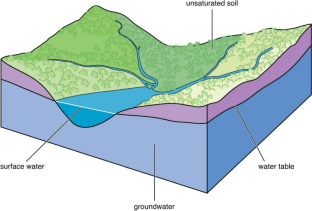
Data availability
The authors confirm that the data supporting the findings of this study are available within the article.
Abijith, D., Saravanan, S., Singh, L., Jennifer, J. J., Saranya, T., & Parthasarathy, K. S. S. (2020). GIS-based multi-criteria analysis for identification of potential groundwater recharge zones: A case study from Ponnaniyaru watershed, Tamil Nadu, India. Hydro Research, 3 , 1–14. https://doi.org/10.1016/j.hydres.2020.02.002
Article Google Scholar
Adeeko, T. O., Samson, D. O., & Umar, M. (2019). Geophysical survey of basement complex terrain using electrical resistivity method for groundwater potential. World News of Natural Sciences, 23 , 154–165.
Google Scholar
Adeyeye, O. A., Ikpokonte, E. A., & Arabi, S. A. (2019). GIS-based groundwater potential mapping within Dengi area, North Central Nigeria. The Egyptian Journal of Remote Sensing and Space Science, 22 (2), 175–181. https://doi.org/10.1016/j.ejrs.2018.04.003
Adiat, K. A. N., Nawawi, M. N. M., & Abdullah, K. (2012). Assessing the accuracy of GIS-based elementary multi-criteria decision analysis as a spatial prediction tool-A case of predicting potential zones of sustainable groundwater resources. Journal of Hydrology, 440–441 , 75–89. https://doi.org/10.1016/j.jhydrol.2012.03.028
Afolayan, J. F., Olorunfemi, M. O., & Afolabi, O. (2004). Geoelectric/electromagnetic VLF survey for groundwater development in a basement terrain: a case study. Ife Journal of Science, 6 (1), 74–78. https://doi.org/10.4314/ijs.v6i1.32126
Akhmetov, Y. M., Assemov, K. M., & Shaytorov, V. N. (2020). Geophysical survey of the earthen dam using the electrical prospecting methods. Contributions to Geophysics and Geodesy, 50 (2), 249–259. https://doi.org/10.31577/congeo.2020.50.2.4
Akinlalu, A. A., Adegbuyiro, A., Adiat, K. A. N., Akeredolu, B. E., & Lateef, W. Y. (2017). Application of multi-criteria decision analysis in prediction of groundwater resources potential: A case of Oke-ana, Ilesa area, southwestern, Nigeria. NRIAG Journal of Astronomy and Geophysics, 6 , 182–200. https://doi.org/10.1016/j.nrjag.2017.03.001
Akintorinwa, O. J., Atitebi, M. O., & Akinlalu, A. A. (2020). Hydrogeophysical and aquifer vulnerability zonation of a typical basement complex terrain: A case study of Odode Idanre southwestern Nigeria. Heliyon, 6 (8), e04549. https://doi.org/10.1016/j.heliyon.2020.e04549
Article CAS Google Scholar
Akintorinwa, O. J., & Olowolafe, T. S. (2013). Geoelectric evaluation of groundwater prospect within zion estate, Akure, southwest, Nigeria. International Journal of Water Resources and Environmental Engineering, 5 (1), 12–28.
Alile, O. M., & Ujuambi, E. (2011). Geoelectric investigation of groundwater in Obaretin-Iyanorno locality, Edo State, Nigeria. Journal of Geology and Mining Research, 3 (1), 13–20.
Ashaolu, E. D., & Adebayo, M. O. (2014). Characterizing Groundwater Level and Flow Pattern in a Shallow Overburden Aquifer: A Study of Ilara-Mokin and its Environs, Southwestern Nigeria. Momona Ethiopian Journal of Science, V6 (2), 55–72.
Asiwaju-Bello, Y. A., & Ololade, J. O. (2013). Groundwater potential of Basement aquifers in part of Southwestern Nigeria. American International Journal of Contemporary Research, 3 (3), 124–141.
Bayode, S., Ojo, J. S., & Olorunfemi, M. O. (2006). Geoelectric characterization of aquifer types in the basement complex terrain of parts of osun state, Nigeria. Global Journal of Pure and Applied Sciences, 12 (3), 377–385.
Encyclopædia Britannica Retrieved 12 Dec 2023 from https://www.britannica.com/science/groundwater#/media/1/247019/54123
Chezgi, J., Pourghasemi, H. R., Naghibi, S. A., Moradi, H. R., & Kheirkhah Zarkesh, M. (2016). Assessment of a spatial multi-criteria evaluation to site selection underground dams in the Alborz Province, Iran. Geocarto International, 31 (6), 628–646.
Dasho, O. A., Ariyibi, E. A., Akinluyi, F. O., et al. (2017). Application of satellite remote sensing to groundwater potential modeling in Ejigbo area, Southwestern Nigeria. Modeling Earth Systems and Environment, 3 , 615–633. https://doi.org/10.1007/s40808-017-0322-z
Ekwe, A. C., Nnodu, I. N., Ugwumbah, K. I., & Onwuka, O. S. (2010). Estimation of aquifer hydraulic characteristics of low permeability formation from geosounding data: A case study of Oduma town, Enugu State. Online Journal of Earth Sciences, 4 (1), 19–26.
Evans, U. F., George, N. J., Akpan, A. E., Obot, I. B., & Ibot, A. N. (2010). A study of superficial sediments and aquifers in parts of Uyo local government area, Akwa Ibom State, Southern Nigeria, using the electrical sounding method. European Journal of Chemistry, 7 (3), 1018–1022. https://doi.org/10.1155/2010/975965
Ezema, O. K., Ibuot, J. C., & Obiora, D. N. (2020). Geophysical investigation of aquifer repositories in Ibagwa Aka, Enugu State, Nigeria, using electrical resistivity method, Groundwater for. Sustainable Development . https://doi.org/10.1016/j.gsd.2020.100458
Falae, P. O. (2014). Application of electrical resistivity in buildings foundation investigation in Ibese Southwestern Nigeria. Asia Pacific Journal of Energy and Environment, 1 (2), 95–107.
Falae, P. O., Dash, R. K., Kanungo, D. P., & Chauhan, P. K. S. (2021). Interpretation on water seepage and degree of weathering in a landslide based on pre-and post-monsoon electrical resistivity tomography. Near Surface Geophysics, 19 , 315–333. https://doi.org/10.1002/nsg.12142
Falae, P. O., Kanungo, D. P., Chauhan, P. K. S., & Dash, R. K. (2019). Electrical resistivity tomography (ERT) based subsurface characterisation of Pakhi Landslide, Garhwal Himalayas, India. Environmental Earth Sciences, 78 , 430. https://doi.org/10.1007/s12665-019-8430-x
Falowo O.O, Amodu M.B. (2020) Groundwater Resource Assessment by Hydraulic Properties Determination for Sustainable Planning and Development in Central Part of Ondo State, Nigeria. JOWSET, (04), N° 02, 499–506.
George, N. J., Akpan, A. E., & Obot, I. B. (2010). Resistivity study of shallow aquifer in parts of southern Ukanafun Local government area, Akwa-Ibom State. European Journal of Chemistry, 7 (3), 693.
George, N. J., Emah, J. B., & Ekong, U. N. (2015). Geophysical properties of hydrogeological units in parts of Niger Delta, southern Nigeria. Journal of African Earth Sciences, 105 , 55–63. https://doi.org/10.1016/j.jafrearsci.2015.02.009
Gillefalk, M., Tetzlaff, D., Hinkelmann, R., Kuhlemann, L.-M., Smith, A., Meier, F., Maneta, M. P., & Soulsby, C. (2021). Quantifying the effects of urban green space on water partitioning and ages using an isotope-based ecohydrological model. Hydrology and Earth System Sciences, 25 (3635–3652), 2021. https://doi.org/10.5194/hess-25-3635-2021
Heigold, P. C., Gilkeson, R. H., Cartwright, K., & Reed, P. C. (1979). Aquifer transmissivity from surficial electrical methods. Groundwater, 17 (4), 338–345.
Helaly, A. S. (2017). Assessment of groundwater potentiality using geophysical techniques in Wadi Allaqi basin, Eastern Desert, Egypt: Case study. NRIAG Journal of Astronomy and Geophysics, 6 (2), 408–421. https://doi.org/10.1016/j.nrjag.2017.09.003
Henriet, J. P. (1976). Direct application of DarZarrouk parameters in ground water surveys. Geophysical Prospecting, 24 , 344–353.
Ibuot, J. C., Obiora, D. N., Ekpa, M. M., & Okoroh, D. O. (2017). Geoelectrohydraulic Investigation of the surficial aquifer units and corrosivity in parts of Uyo L. G. A., Akwa Ibom, Southern Nigeria. Journal of Applied Water Science, 7 , 4705–4713. https://doi.org/10.1007/s13201-017-0632-3
Karandish, F., Nouri, H., & Brugnach, M. (2021). Agro-economic and socio-environmental assessments of food and virtual water trades of Iran. Science and Reports, 11 , 15022. https://doi.org/10.1038/s41598-021-93928-9
Lamsal, I., Ghimire, S., & Acharya, K. K. (2020). Geological and Geophysical Study in Udheri Khola Area Nalgad Hydroelectric Project, Jajarkot District, Lesser Himalaya, Western Nepal. Bulletin of the Department of Geology., 22 , 11–16. https://doi.org/10.3126/bdg.v22i0.33409
Marotz, G. (1968). Techische Grundlageneiner Wasswerspeicherung Immnaturlichen Utergrund Habilitationsschrift . Universitat Stuttgart.
Meying, A., Bidichael, W. W. E., Gouet, D., Ndougsa, M. T., Kuiate, K., & Ngoh, J. D. (2018). Hydrogeophysical investigation for groundwater resources from electrical resistivity tomography and self-potential data in the M´eiganga area, Adamawa, Cameroon. International Journal of Geophysics, 2018 , 1–14. https://doi.org/10.1155/2018/2697585
Niwas, S., & Singhal, D. C. (1981). Estimation of aquifer transmissivity from dar zarrouk parameters in porous media. Journal of Hydrology, 50 , 393–399.
Offodile, M.E. (2002). Groundwater Study and Development in Nigeria. Mecon Geology and Engineering Services Ltd., Jos. Nigeria, 453.
Ogungbemi, O. S., & Oladapo, M. I. (2014). Combined Use of Electromagnetic and Magnetic Survey for Hydrogeophysical Characterization of Ijapo Housing Estate. Akure, British Journal of Applied Science and Technology, 4 (7), 1138–1148.
Oladapo, M. I., & Akintorinwa, O. J. (2007). Hydrogeophysical study of Ogbese south western Nigeria. Global Journal of Pure and Applied Sciences, 13 (1), 55–61. https://doi.org/10.4314/gjpas.v13i1.16669
Oladapo, M. I., Mohammed, M. Z., Adeoye, O. O., & Adetola, B. A. (2004). Geo-electrical investigation of Ondo state housing corporation estate, Ijapo, Akure, southwestern Nigeria. Journal of Mining and Geology, 40 (1), 41–48. https://doi.org/10.4314/jmg.v40i1.18807
Oladunjoye, M. A., Korode, I. A., & Adefehinti, A. (2019). Geoelectrical exploration for groundwater in crystalline basement rocks of Gbongudu community, Ibadan, southwestern Nigeria. Global Journal of Geological Sciences, 17 , 25–43. https://doi.org/10.4314/gjgs.v17i1.3
Olorunfemi, M. O., & Fasuyi, S. A. (1993). Aquifer types and the geo-electric/hydrogeologic characteristics of part of the central basement terrain of Nigeria (Niger state). Journal of African Earth Sciences, 16 (3), 309–317. https://doi.org/10.1016/0899-5362(93)90051-Q
Oni, T. E., Omosuyi, G. O., & Akinlalu, A. A. (2017). Groundwater vulnerability assessment using hydrogeologic and geoelectric layer susceptibility indexing at Igbara Oke, Southwestern Nigeria. NRIAG J. of Astronomy and Geophy., 6 (2), 452–458. https://doi.org/10.1016/j.nrjag.2017.04.009
Oyeyemi, K. D., Joyce, A., Oluwatosin, J. R., Bastien, D., Modreck, G., Olaojo, A. A., Falae, P. O., & Mohamed, M. (2023). Geoelectrical characterization of coastal aquifers in Agbado-Ijaye, Lagos, Southwestern Nigeria. Implications for Groundwater Resources Sustainability. Sustainability, 15 (4), 3538. https://doi.org/10.3390/su15043538
Rahaman, M. A. (1976). Review of the basement geology of Southwestern Nigeria. In C. A. Kogbe (Ed.), Geology of Nigeria. Elizabethan Publishing.
Snyder, S. (2019). Water in crisis: Spotlight India. Retrieved 01 Sep 2022 from https://thewaterproject.org/water-crisis/water-in-crisis-India
Taye, M. T., Dyer, E., Hirpa, F. A., & Charles, K. (2018). Climate change impact on water resources in the Awash Basin, Ethiopia. Water, 10 (11), 1560. https://doi.org/10.3390/w10111560
Venkatesan, G., Pitchaikani, S., & Saravanan, S. (2019). Assessment of groundwater vulnerability using GIS and DRASTIC for upper Palar River basin, Tamil Nadu. Journal of the Geological Society of India, 94 (4), 387–394. https://doi.org/10.1007/s12594-019-1326-2
Zhang, X., Zhang, J. Y., Ao, T. Q., Wang, X. J., Chen, T., & Wang, B. X. (2021). Evaluating the impacts of climate change on industrial water demand by sector. Climate Research, 84 , 145–158. https://doi.org/10.3354/cr01661
Download references
The authors have not received funding for this project.
Author information
Authors and affiliations.
Department of Geology, Afe Babalola University, Ado Ekiti, Nigeria
Ayodeji K Ogundana & Philips Omowumi Falae
You can also search for this author in PubMed Google Scholar
Corresponding author
Correspondence to Philips Omowumi Falae .
Ethics declarations
Conflict of interest.
The authors report there are no competing interests to declare.
Ethical approval
Not applicable.
Additional information
Publisher's note.
Springer Nature remains neutral with regard to jurisdictional claims in published maps and institutional affiliations.
Rights and permissions
Springer Nature or its licensor (e.g. a society or other partner) holds exclusive rights to this article under a publishing agreement with the author(s) or other rightsholder(s); author self-archiving of the accepted manuscript version of this article is solely governed by the terms of such publishing agreement and applicable law.
Reprints and permissions
About this article
Ogundana, A.K., Falae, P.O. Groundwater potential modelling and aquifer zonation of a typical basement complex terrain: a case study. Environ Dev Sustain (2024). https://doi.org/10.1007/s10668-024-04940-8
Download citation
Received : 24 April 2023
Accepted : 16 April 2024
Published : 29 April 2024
DOI : https://doi.org/10.1007/s10668-024-04940-8
Share this article
Anyone you share the following link with will be able to read this content:
Sorry, a shareable link is not currently available for this article.
Provided by the Springer Nature SharedIt content-sharing initiative
- Aquifer characteristics
- Transmissivity
- Longitudinal conductance
- Groundwater potential
- Find a journal
- Publish with us
- Track your research

COMMENTS
In this study, we implemented food development using a new approach utilizing AI including generative AI. NEC Corporation [4] and the long-established bread manufacturer, Kimuraya Sohonten Co. [5], jointly created bread, ... Izumi Hashimoto, Takashi Motegi, and Yosuke Motohashi. A case study of food production using artificial intelligence. In ...
Franceschelli MV, Santoro G, Candelo E. Business model innovation for sustainability: A food start-up case study. British Food Journal. 2018; 120 (10):2483-2494. doi: 10.1108/BFJ-01-2018 ... Caniato F. Innovation for sustainable development in the food industry: Retro and forward-looking innovation approaches to improve quality and ...
Food product development is a lengthy process. But the proper study is required. This article explains different steps with the flowchart in Food NPD. ... [Source: Superbrands case studies: Lucozade] After understanding the new food product development classifications, let's look at the food product development process. ...
The project included new convenience food development, packaging design, consumer market research and a sensory study to back up the food product development on behalf of a newly established company. Theoretical grounds for the case are based on the new product development (NPD) research process in the food sector.
Case study. This section presents a case study undertaken with a food manufacturing company to analyse their new food product development (NFPD) process and discusses how the use of the methodologies and tools described in Section 3 could help them to design more sustainable FPs. The criteria to select the food manufacturing company were that ...
Consumer-led eco-development of food products: a case study to propose a framework - Author: Chloé Thomas, Isabelle Maître, Ronan Symoneaux. The purpose of this paper is to propose an agile methodology for the development of food products that has two key characteristics: (1) consumers are included as co-creators and (2) the assessment of ...
The food industry is an intriguing area for studying product development as it is an extremely competitive field and has seen a shift in operations from supply-based to demand-based due to the ...
by Matt Lowe, G V Nadhanael, and Benjamin N. Roth. Policy makers in the developing world face important tradeoffs in reacting to a pandemic. The quick and complete recovery of India's food supply chain suggests that strict lockdown measures at the onset of pandemics need not cause long-term economic damage. 08 Jun 2020.
Case studies in food product development is a complement and a practical companion to this book. Show less. New product development is vital for the future of the food industry. Many books have been written on NPD theory over the last 40 years, but much can still be learnt by studying actual experiences of NPD. Case studies in food product ...
Case studies in food product development describes specific NPD projects in a variety of industries internationally and also records overall comments, written by the very people who have completed the projects.Part one outlines new product development in the food industry and part two views product development strategy and management in ...
Case studies: product development in the food system 319 markets for which the products are designed; technology available and used; time taken for product development; costs of product development; priorities set by the various parts of the food system. The Case Studies cannot be taken as typical of PD Processes because each has ...
All Food Science & Technology Case Studies Case Study. What's in Your Food? By Bwalya Lungu. Case Study. Deep in the Weeds of Organic Farming. By Matthew S. Taylor, Mariëlle H. Hoefnagels, Mark E. Walvoord. Case Study. Fishing Midst the Morning Dew. By Adela M. Acosta. Case Study. Through the Grater.
Sustainable Development Goals and Agro-Food System: the Case Study of the Future Food Institute Published on January 14, 2021 Food For Earth is an open source tool developed by Future Food Institute in order to model the climate crisis and regenerate the planet, starting from food.
A case study on the new product development process Robert Rankin College of Business Texas A & M University - Commerce Email: [email protected] Alma Mintu-Wimsatt* ... frozen food product that continues to be marketed and sold twenty years after its introduction. This case is based on an actual company and events.
Case studies in food product development describes specific NPD projects in a variety of industries internationally and also records overall comments, written by the very people who have completed the projects. Part one outlines new product development in the food industry and part two views product development strategy and management in ...
2.2. Case Study Method. Taking into account that the analysis of a supply chain as a whole is a complex and difficult task and in order to explore the SSCM critical factors, practices and performance in the food industry, a case study was selected as the most appropriate research method [27,28]. This study investigates a sustainable supply ...
A. Determining the cost of developing a food delivery app involves considering various factors such as the app's features, complexity, platform choice, design intricacies, and the location of the development team. On average, food delivery app development costs range between $30,000 to $300,000 or more. THE AUTHOR.
The fourth Case Study is the development of a consumer product, a new variety of sauces. The development was to establish a new product platform with a number of individual lines, in a large factory unit of a multinational food manufacturing company, and to sell these sauces initially locally, and then for export to major international markets.
The early development of conceptual models of food choice can be dated back to the 1990s. ... investigated such as liking, food or nutritional knowledge, personal values, emotion, income, and sensory properties of food. Future studies should explore other factors and their effects on food choices. ... In this case, interdisciplinary research is ...
This book brings together experiences from different countries addressing the challenges associated with food security. Seen through various disciplinary lenses the different cases included are countries at various stages of food security, with diverse stories of success as well as failures in their efforts. China, Brazil and India, as well as ...
This book brings together experiences from different countries addressing the challenges associated with food security. Seen through various disciplinary lenses the different cases included are countries at various stages of food security, with diverse stories of success as well as failures in their efforts. China, Brazil and India, as well as ...
Download Citation | Food security and development: Country case studies | The global food system is characterized by large numbers of people experiencing food insecurity and hunger on the one hand ...
52 Development Bulletin 82 Food security and community development in the Pacific: Case studies from Fiji Suliasi Vunibola and Ilisoni Leweniqila, Massey University, New Zealand Introduction This paper considers the role of bula vakavanua (the Fijian way of life) in two indigenous Fijian communities, Saroni1
August 30, 2023. A recent review of case studies on food safety management systems (FSMS) in small- to medium-sized food businesses in developing regions around the world has painted a picture of global FSMS developments and identified the constraints and advantages associated with their implementation.
Sustainable Development Goal 12 (SDG 12) and national waste reduction goals require frequent waste analyses for monitoring and governance decisions. We developed and tested a citizen science (CS)-based household waste diary for ten consecutive days with 89 volunteer households in Switzerland as a complementary monitoring option to official composition analyses. Discrepancies between the CS ...
This qualitative-phenomenological study aimed to assess the stakeholders' perspectives on the conservation and urbanization of Lucban, Quezon, as a historic town.The researchers deployed focus group discussion and documentary analysis to collect significant information from the key informants (n = 8).A repertory grid and thematic network analysis were used to evaluate and assess the ...
On Friday, a school spokesman said, "Calls of violence and statements targeted at individuals based on their religious, ethnic or national identity are unacceptable and violate university policy."
2.1 Location, accessibility, and relief of the study area. The study area is located within the Ifedore Local government area of Ondo State, Nigeria. The area covers about 67.5 Km 2 and lies within latitude 7.32 and 7.42 N and longitude 5.02 and 5.16 E with an average elevation of 362 msl (Fig. 2) in Universal Traverse Mercator (UTM) Zone 31N (Fig. 2).
Read the latest game development guides, e-books, webinars, case studies, as well as other resources for industry experts, in Unity's resource hub.
To highlight these interests and concerns, this work features a study of the African natural language processing (NLP) community presenting insights from the work of the Masakhane Research Foundation (a distributed research organization with the mission to advance African NLP), 5 Ghana NLP (an open-source initiative focused on NLP involving Ghanaian languages), 6 and KenCorpus (a community ...